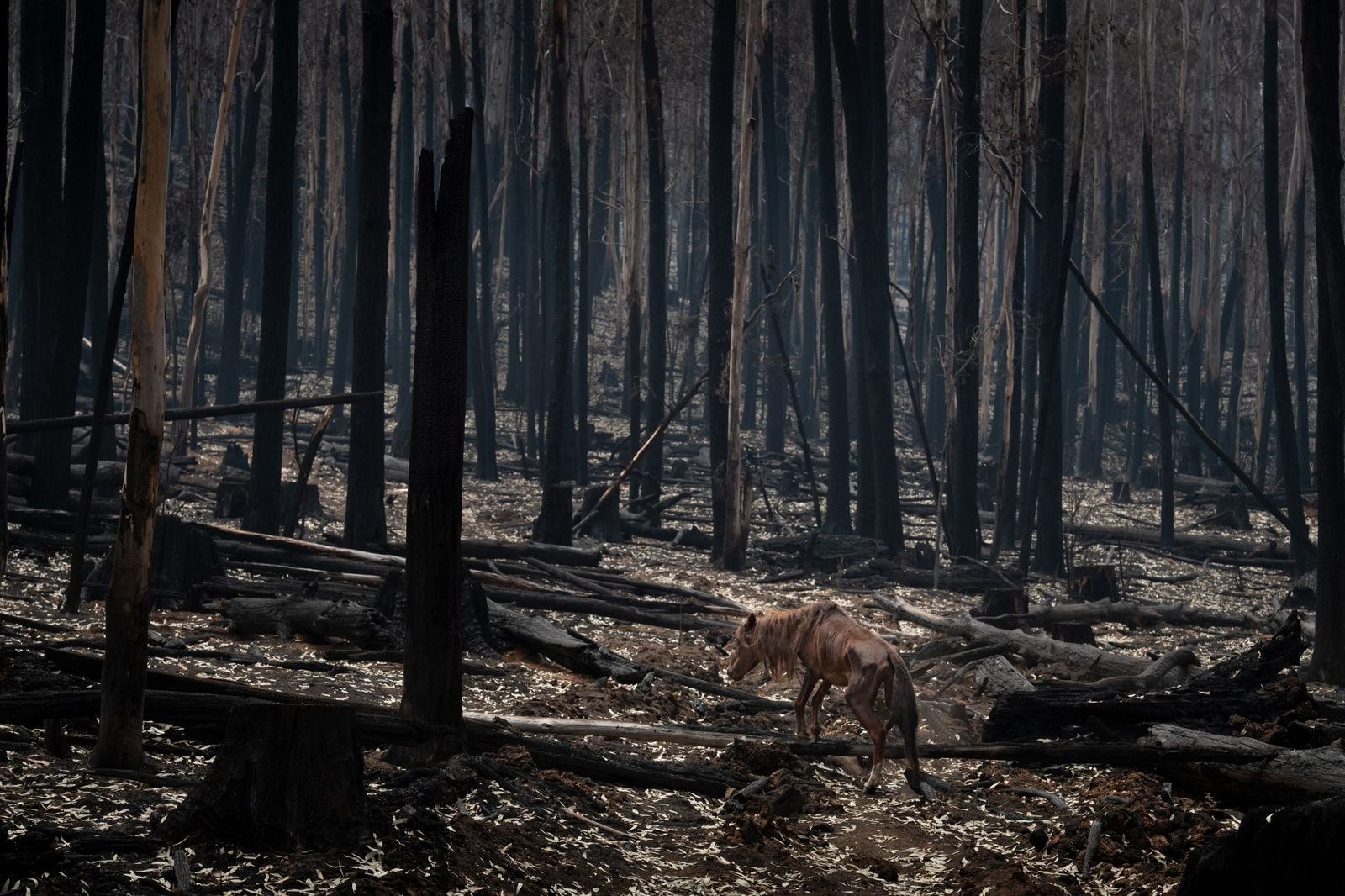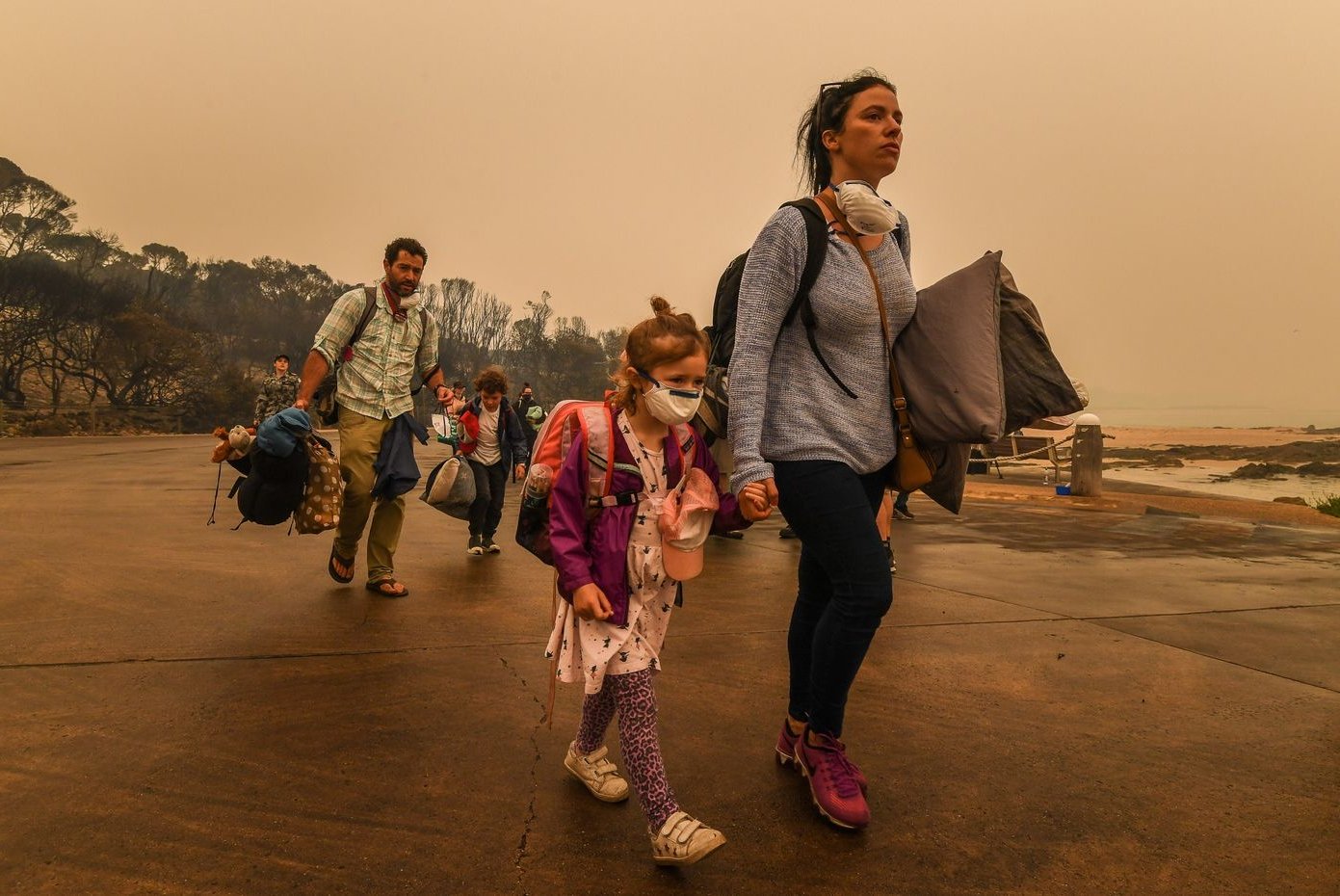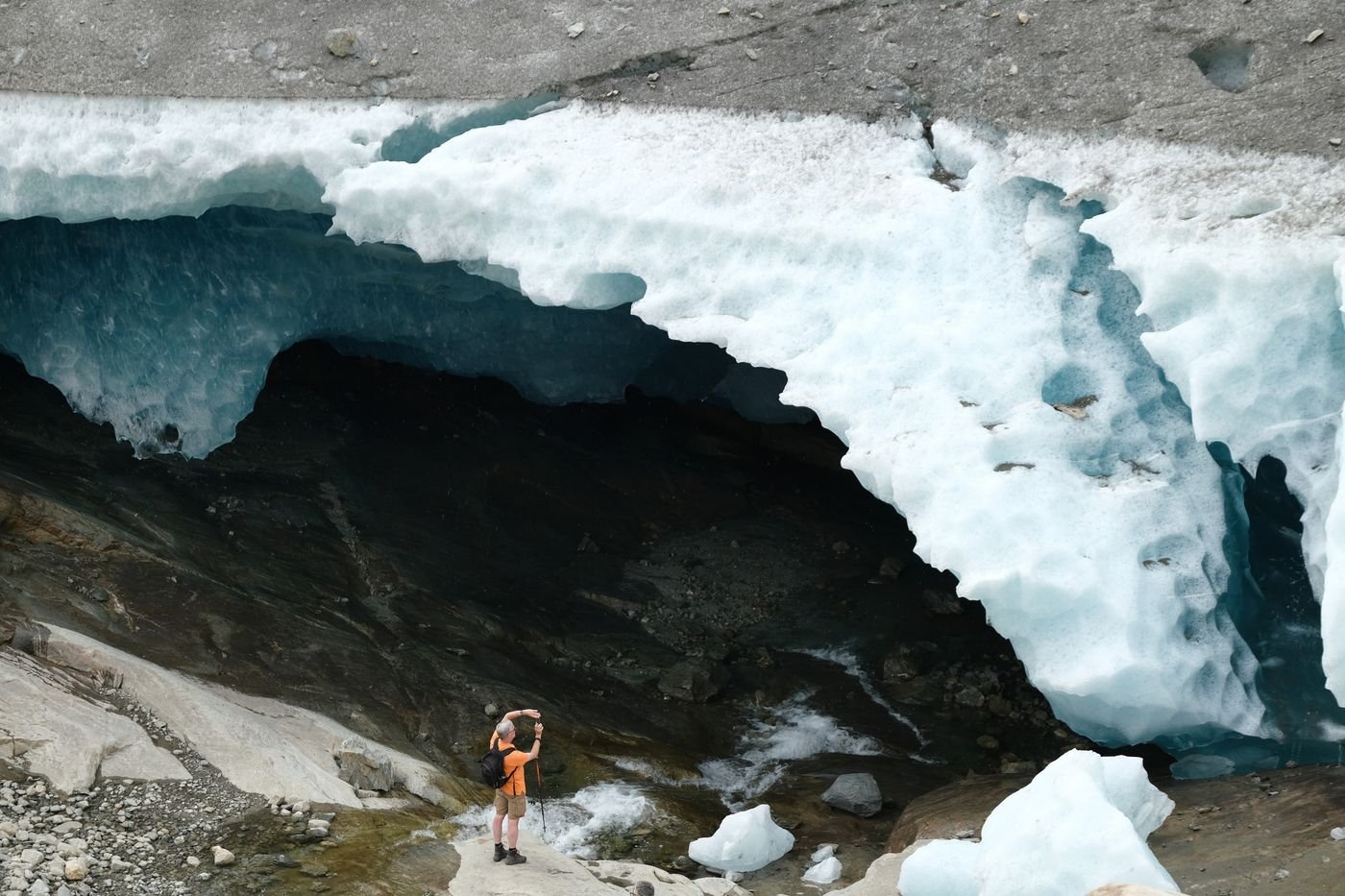
OVERVIEW
MANAGEMENT
PERFORMANCE
POSSIBILITIES
CAPITALS
ACTIVITIES
ACTORS
BURGESS
Climate Crisis | ||
|
Burgess COMMENTARY I have used data as a part of my approach to management, and it comes as no surprise at all for me that the scientists are being surprised that the experience today is considerably worse than they have projected in the past. As I see it, the scientists reported in the past their consensuis view of wht was going to happen, without talling us that the distribution of the pmpedao projects was in fact not 'normal'. It is this characteristic of the projections that is nopw shoing up ... and making the scientists nervous. In my view, it is exactly what one should have enn expecting! Peter Burgess | ||

A malnourished wild horse in Australia's Bago State Forest. Photographer: Matthew Abbott/The New York Times via Redux Climate Models Are Running Red Hot, and Scientists Don’t Know Why ... The simulators used to forecast warming have suddenly started giving us less time. By Eric Roston There are dozens of climate models, and for decades they’ve agreed on what it would take to heat the planet by about 3° Celsius. It’s an outcome that would be disastrous—flooded cities, agricultural failures, deadly heat—but there’s been a grim steadiness in the consensus among these complicated climate simulations. Then last year, unnoticed in plain view, some of the models started running very hot. The scientists who hone these systems used the same assumptions about greenhouse-gas emissions as before and came back with far worse outcomes. Some produced projections in excess of 5°C, a nightmare scenario. The scientists involved couldn’t agree on why—or if the results should be trusted. Climatologists began “talking to each other like, ‘What’d you get?’, ‘What’d you get?’” said Andrew Gettelman, a senior scientist at the National Center for Atmospheric Research in Boulder, Colorado, which builds a high-profile climate model. “The question is whether they’ve overshot,” said Mark Zelinka, staff scientist at Lawrence Livermore National Laboratory.  relates to Climate Models Are Running Red Hot, and Scientists Don’t Know Why
People fleeing Australian bushfires in December 2019.
Photographer: Justin McManus/The Age/Fairfax Media via Getty Images
Researchers are starting to put together answers, a task that will take months at best, and there’s not yet agreement on how to interpret the hotter results. The reason for worry is that these same models have successfully projected global warming for a half century. Their output continues to frame all major scientific, policy and private-sector climate goals and debates, including the sixth encyclopedic assessment by the UN’s Intergovernmental Panel on Climate Change due out next year. If the same amount of climate pollution will bring faster warming than previously thought, humanity would have less time to avoid the worst impacts.
Explore dynamic updates of the earth’s key data points
Open the Data Dash
65432
32109
65432
87654
76543
32109
54321
10987
65432
54321
76543
43210
76543
For now, however, there are doubts and worries. A higher warming estimate “probably isn’t the right answer,” said Klaus Wyser, senior researcher at the Swedish Meteorological and Hydrological Institute. His model produced a result of about 4.3°C warming, a 30% jump over its previous update. “We hope it’s not the right answer.”
This uncertainty over how to read the models highlights one of the central challenges of climate change. On the one hand, policy makers and members of the public are turning to scientists as never before to explain historic wildfires, devastating droughts and spring-like temperatures in mid-winter. And the bedrock of the science has never been more solid. But the questions vexing experts now are probably the most important of all: Just how bad is it going to get—and how soon?
Earth-system models are the workhorses of climate research, helping scientists test ideas about the impact of ice-sheet melting, soil moisture and clouds, all without waiting for the actual planet to fall apart. There are more than a hundred models used to forecast the relationship between carbon dioxide and warming, developed by about two dozen independent research groups.
One question modeling can help answer is called “climate sensitivity,” an estimate of how much warmer the planet will be once it has adjusted to atmospheric CO₂ at double the pre-industrial level. (At current rates, CO₂ could reach a doubling point in the last decades of this century.) This is the old, reliable number that’s come out to 3°C for 40 years. It was as close as anything gets to certainty.
It takes climate modelers, who run hugely complex calculations on supercomputers, more than a biblical six days to create their virtual worlds. Modules for air, land and sea all churn together and interact, and through early runs the researchers will make adjustments for troubleshooting and debugging that amount to re-wiring the whole world. The first step is to replicate actual conditions of the 20th century within the model; then you can trust the software to forecast the future.
The model run by NCAR, one of American’s main climate-science institutions, started producing unusual data last year while trying to reproduce the recent past. “We got some really strange results,” Gettelman said.
relates to Climate Models Are Running Red Hot, and Scientists Don’t Know Why
People fleeing Australian bushfires in December 2019.
Photographer: Justin McManus/The Age/Fairfax Media via Getty Images
Researchers are starting to put together answers, a task that will take months at best, and there’s not yet agreement on how to interpret the hotter results. The reason for worry is that these same models have successfully projected global warming for a half century. Their output continues to frame all major scientific, policy and private-sector climate goals and debates, including the sixth encyclopedic assessment by the UN’s Intergovernmental Panel on Climate Change due out next year. If the same amount of climate pollution will bring faster warming than previously thought, humanity would have less time to avoid the worst impacts.
Explore dynamic updates of the earth’s key data points
Open the Data Dash
65432
32109
65432
87654
76543
32109
54321
10987
65432
54321
76543
43210
76543
For now, however, there are doubts and worries. A higher warming estimate “probably isn’t the right answer,” said Klaus Wyser, senior researcher at the Swedish Meteorological and Hydrological Institute. His model produced a result of about 4.3°C warming, a 30% jump over its previous update. “We hope it’s not the right answer.”
This uncertainty over how to read the models highlights one of the central challenges of climate change. On the one hand, policy makers and members of the public are turning to scientists as never before to explain historic wildfires, devastating droughts and spring-like temperatures in mid-winter. And the bedrock of the science has never been more solid. But the questions vexing experts now are probably the most important of all: Just how bad is it going to get—and how soon?
Earth-system models are the workhorses of climate research, helping scientists test ideas about the impact of ice-sheet melting, soil moisture and clouds, all without waiting for the actual planet to fall apart. There are more than a hundred models used to forecast the relationship between carbon dioxide and warming, developed by about two dozen independent research groups.
One question modeling can help answer is called “climate sensitivity,” an estimate of how much warmer the planet will be once it has adjusted to atmospheric CO₂ at double the pre-industrial level. (At current rates, CO₂ could reach a doubling point in the last decades of this century.) This is the old, reliable number that’s come out to 3°C for 40 years. It was as close as anything gets to certainty.
It takes climate modelers, who run hugely complex calculations on supercomputers, more than a biblical six days to create their virtual worlds. Modules for air, land and sea all churn together and interact, and through early runs the researchers will make adjustments for troubleshooting and debugging that amount to re-wiring the whole world. The first step is to replicate actual conditions of the 20th century within the model; then you can trust the software to forecast the future.
The model run by NCAR, one of American’s main climate-science institutions, started producing unusual data last year while trying to reproduce the recent past. “We got some really strange results,” Gettelman said.
 Europe's Melting Glaciers: Aletsch ... A gap created by flowing water at the edge of the Aletsch glacier near Bettmeralp, Switzerland. Photographer: Sean Gallup/Getty Images Europe
The scientists went on to try 300 configurations of rain, pollution, and heat flows—something they can do as gods of their own digital earth—before matching the model to history. But by solving that puzzle, Gettelman’s team sent future projections upward at an unheard-of rate. NCAR found that CO₂ doubling would lead to 5.3°C world, a 33% jump from the model’s past reading on global warming.
Soon there were multiple teams at other institutions putting out new climate-sensitivity numbers that looked like worst-case scenarios on steroids. The Met Office Hadley Center, the U.K.’s main research group, found a doubling of CO₂ would deliver 5.5°C warming. A team at the U.S. Department of Energy ended up with 5.3°C, and the Canadian model topped out at 5.6°C. France’s National Center for Meteorological Research saw its estimate jump to 4.9°C from 3.3°C.
Europe's Melting Glaciers: Aletsch ... A gap created by flowing water at the edge of the Aletsch glacier near Bettmeralp, Switzerland. Photographer: Sean Gallup/Getty Images Europe
The scientists went on to try 300 configurations of rain, pollution, and heat flows—something they can do as gods of their own digital earth—before matching the model to history. But by solving that puzzle, Gettelman’s team sent future projections upward at an unheard-of rate. NCAR found that CO₂ doubling would lead to 5.3°C world, a 33% jump from the model’s past reading on global warming.
Soon there were multiple teams at other institutions putting out new climate-sensitivity numbers that looked like worst-case scenarios on steroids. The Met Office Hadley Center, the U.K.’s main research group, found a doubling of CO₂ would deliver 5.5°C warming. A team at the U.S. Department of Energy ended up with 5.3°C, and the Canadian model topped out at 5.6°C. France’s National Center for Meteorological Research saw its estimate jump to 4.9°C from 3.3°C.
Hot Models The Earth could warm 3°C if CO2 doubles, scientists thought. Updated Earth system models suggest faster warming — or a quirk in time-tested simulations. 
Source: Mark D. Zelinka et al. 'Causes of higher climate sensitivity in CMIP6 models.' Geophysical Research Letters. In all, as many as a fifth of new results published in the last year have come in with anomalously high climate sensitivity. There are dozens still left to report, and their results will determine whether these grim forecasts are outliers or significant findings. If there does turn out to be a consensus around these new, higher estimates, that could have real impact on how governments and businesses respond to climate risk. The 2015 Paris Agreement asks nations to keep global warming below 1.5°C, an increasingly distant hope given that we’re now two-thirds of the way there. But the timetable on which the world agreed to act in the name of that goal was formed, in part, by reading the very same climate models that are now producing higher estimates. And that could mean the goal envisioned by Paris is already out of reach. Wyser was expecting to get calls from journalists about the disturbing hot-model results. “It was known in the research community for, let’s say, about a year,” he said. But he didn't know how to go about communicating the findings, and almost no one outside of the tight network of researchers came looking for answers. “It more or less just passed unnoticed.” Two researchers recently suggested that the world is currently on a pathway to warm 3°C by 2100. But that estimate could be as low as 1.9°C or as high as 4.4°C, depending on how sensitive the real-world climate turns out to actually be. That question hinges on if the hot-running models are a match for reality or missing something. Climate models have been doing a fine job projecting warming for a long time. A recent study compared models as old as 1970 with observations made in the decades since. Some models warmed up too much, and some too little, but 14 of 17 past projections turned out to be consistent with the measured path of global average temperatures. “Particularly impressive” were models from the 1970s because there wasn’t much observable evidence for warming at that time. Back then, the paper noted, “the world was thought to have been cooling for the past few decades.” To a degree, every scientist suspects their model is wrong. There’s even an aphorism about this: “All models are wrong, but some are useful.” Those now attempting to figure out the mystery of the hot climate models think one factor might have caused the recent unusual results: clouds. It turns out simulated clouds often cause headaches for climate modelers. “We hope it’s not the right answer” Klaus Wyser’s group “switched off” some of the new cloud and aerosol settings in their model, he said, and that sent climate sensitivity back down to previous levels. A new research paper co-authored by Zelinka from the Lawrence Livermore National Lab likewise pointed to the role of virtual clouds in determining the results. It’s not as simple as reverting to older versions of these simulations. The challenge ahead, Gettelman said, lies in figuring out how tweaks to models can introduce such turmoil into the final results. “What really scares me is that our model looked better for some really good physical reasons,” he said. “So we can't throw them out yet.” In the next year, climate-modeling groups will peruse each other’s results to figure out how seemingly good improvements in cloud and aerosol science may have pushed the models into hotter states. These conversations happen in the open, through peer-reviewed journals, conferences and blog posts. The authors of the main UN climate-science reports will follow along and try to stitch together a big picture, for release in 2021. In the meantime, Gettelman and colleagues around the world will push ahead. “It’s like a giant puzzle,” he said, “where everybody gets a little piece.” —With Akshat Rathi
Eric Roston
| February 3, 2020, 5:00 AM EST The text being discussed is available at | https://www.bloomberg.com/news/features/2020-02-03/climate-models-are-running-red-hot-and-scientists-don-t-know-why and |